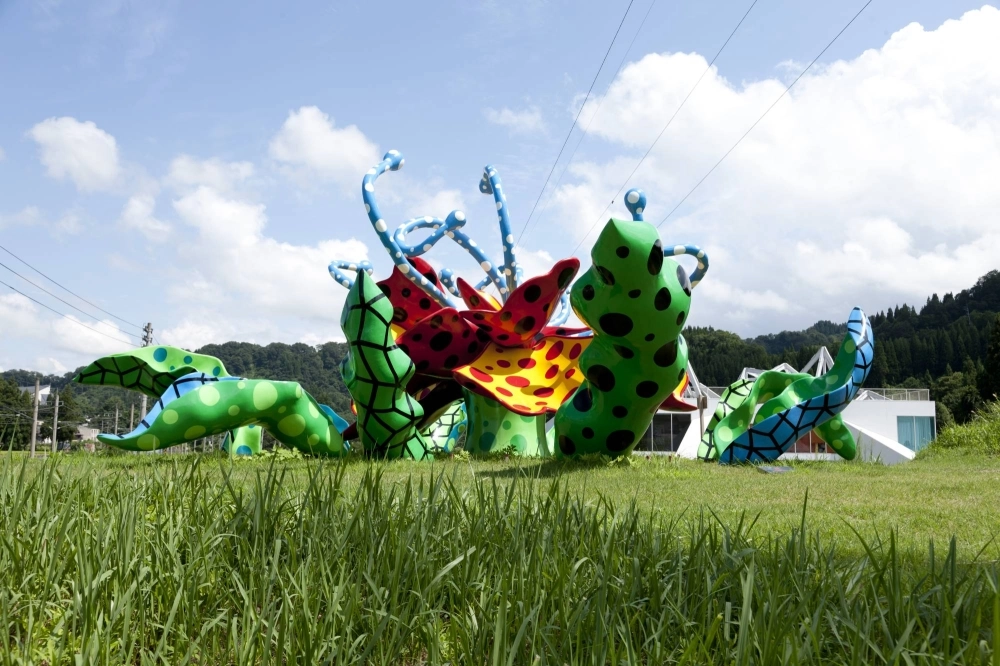This summer, 大地の芸術祭 (daichi no geijutsu-sai, Echigo-Tsumari Art Field), also known as Echigo-Tsumari Art Triennale, runs July 13 to Nov. 10 in Niigata Prefecture, adding one more destination to Japan’s busy schedule of 夏祭り (natsu matsuri, summer festivals). Although it’s held in what may be an inconvenient location, seeing Yayoi Kusama’s favorite flower sculpture in a natural setting is worth the trip. 夏休みは家族や友達をお祭りに誘って、楽しい思い出を作りましょう (Natsuyasumi wa kazoku ya tomodachi o o-matsuri ni sasotte, tanoshii omoide o tsukurimashō, During the summer vacation, let’s invite family and friends to festivals and make delightful memories).
If you’re going to make some delightful summer memories with friends and family, you’ll first need to know how to invite them to do so, and that starts with the irregular verb する (suru, to do). Taking the “masu” stem — that’s します (shimasu, to do) without the “ます” (masu) — we can add a volitional “ō” ending and end up with the polite しましょう (shimashō) or more casual ~しよう (~shiyō), which are the most basic structures to use when proposing doing something.
In English, this form translates loosely as “let’s” (which is why you’ll see that word in a lot of Japanese-to-English translations). Adding the question particle か (ka) to ~しよう, the result can translate as “shall we” or “wanna”: パーティーしようか? (Pātī shiyō ka?, Wanna [have a] party?)


















With your current subscription plan you can comment on stories. However, before writing your first comment, please create a display name in the Profile section of your subscriber account page.